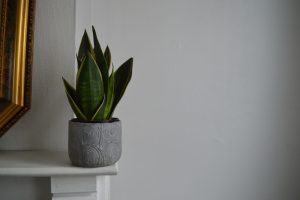Are you looking for something that could spice up your collection of house plants? If you love air plants, there’s an adorable way of displaying them. Turn them into jellyfish air plants and suspend them on air. It’s a fun and cute idea, one to immediately brighten up a space.

Air plants do not need soil to grow. The nutrients that they need to thrive, they get from the air. You can simply hang them up. But then again, you can also veer away from the ordinary and instead create something special. These jellyfish air plants are exactly what you’re looking for – creative, whimsical, and fun!
This is a really easy project. You can ask your kids to make these jellyfish air plants with you. It’s a great bonding activity for the whole family. Also, you can give these away as a nice housewarming present.
Creating a Jellyfish Air Plant
Contents
Materials
- Sea Urchin Shells
- Live Air Plants
- String/Twine
Tools
- Scissors
Instructions
1. Prepare Your Materials
Gather all the materials and tools listed above. Select a sea urchin shell and a live air plant (Tillandsia) that fits nicely into the opening of the shell. The size of the air plant should be such that it resembles the tentacles of a jellyfish when attached to the shell.
2. Measure and Cut the String
Using the scissors, cut a length of string or twine. The length will depend on how low you want your jellyfish to hang. A good starting point is about 24 inches, but you can adjust this based on your preference.
3. Attach the String to the Sea Urchin Shell
Tie one end of the string securely around the narrower, or the top, part of the sea urchin shell. Ensure the knot is tight and secure to prevent the shell from falling. If the shell has natural holes, you can thread the string through these holes to help secure it further.
4. Insert the Air Plant
Carefully insert the live air plant into the opening of the sea urchin shell. The air plant should fit snugly; however, ensure not to damage the plant by forcing it in. The leaves (or tentacles) of the air plant should dangle below the shell, mimicking the look of jellyfish tentacles.
5. Hang Your Jellyfish Air Plant
Choose a spot where your jellyfish air plant will receive adequate air circulation and indirect sunlight. Hang the jellyfish air plant from a hook, a shelf, or any other suitable place where it can freely dangle and mimic the serene motion of a jellyfish in the water.
Get a visual instruction with this video:
Choosing the Right Air Plants for Your Jellyfish
Creating a jellyfish air plant is an innovative way to bring a touch of the ocean into your home. This unique blend of sea urchin shells and live air plants mimics the graceful appearance of jellyfish, floating serenely in the air. The key to a successful jellyfish air plant lies in selecting the appropriate air plants.
This guide will help you choose the best air plants to ensure your jellyfish air plant thrives, adding a whimsical and lively element to your decor.
Understanding Air Plants
Before embarking on your jellyfish air plant project, it’s crucial to grasp the nature of air plants. Tillandsias, known for their resilience and versatility, obtain their nutrients and moisture directly from the air. Their soil-less nature makes them perfect candidates for the jellyfish air plant concept. The minimal care requirement of air plants aligns with the ease of maintaining a jellyfish air plant, promising an eye-catching display with minimal effort.
Size Matters
The size of the air plant relative to the sea urchin shell is paramount in creating a balanced jellyfish air plant. It’s essential to select an air plant that complements the shell’s size, ensuring it’s not too big to overwhelm the shell or too small to go unnoticed. Achieving a harmonious balance between the plant and the shell is key to creating the illusion of a jellyfish, with the plant’s leaves acting as the tentacles that gracefully extend and sway.
Leaf Structure and Appearance
The leaf structure of the air plant is a critical aspect to consider for enhancing the jellyfish air plant’s authenticity. Opt for air plants with soft, flexible leaves that naturally drape or hang over the shell’s edges.
This characteristic is vital for simulating the jellyfish’s tentacles. Air plants like Tillandsia usneoides (Spanish Moss) and Tillandsia caput-medusae are ideal for this purpose. Their tendrilly, elongated leaves are perfect for recreating the flowing tentacles of a jellyfish, adding to the overall illusion and beauty of your jellyfish air plant.
Color and Vitality
Choosing air plants with a healthy green color and vibrant vitality is essential for your jellyfish air plant. Some air plants feature hints of pink, purple, or red, which can add a delightful pop of color to your jellyfish display. Ensure the plants you select are healthy and free from any signs of damage or dehydration to guarantee a long-lasting and beautiful display.
Adapting to the Environment
Finally, consider the environment where your jellyfish air plant will reside. Ensure the air plants you choose are well-suited to the humidity and light conditions of the area. Most air plants prefer bright, indirect light and a moderate to high humidity level, typical of many home environments. Adapting your selection to your specific environment will ensure your jellyfish air plant not only looks fantastic but also thrives.
Creating a jellyfish air plant is a delightful project that combines the beauty of the sea with the ease of air plant care. By carefully selecting the right air plants, you can ensure your jellyfish air plant becomes a captivating and whimsical addition to your home.
Click on any image to start the lightbox display. Use your Esc key to close the lightbox.




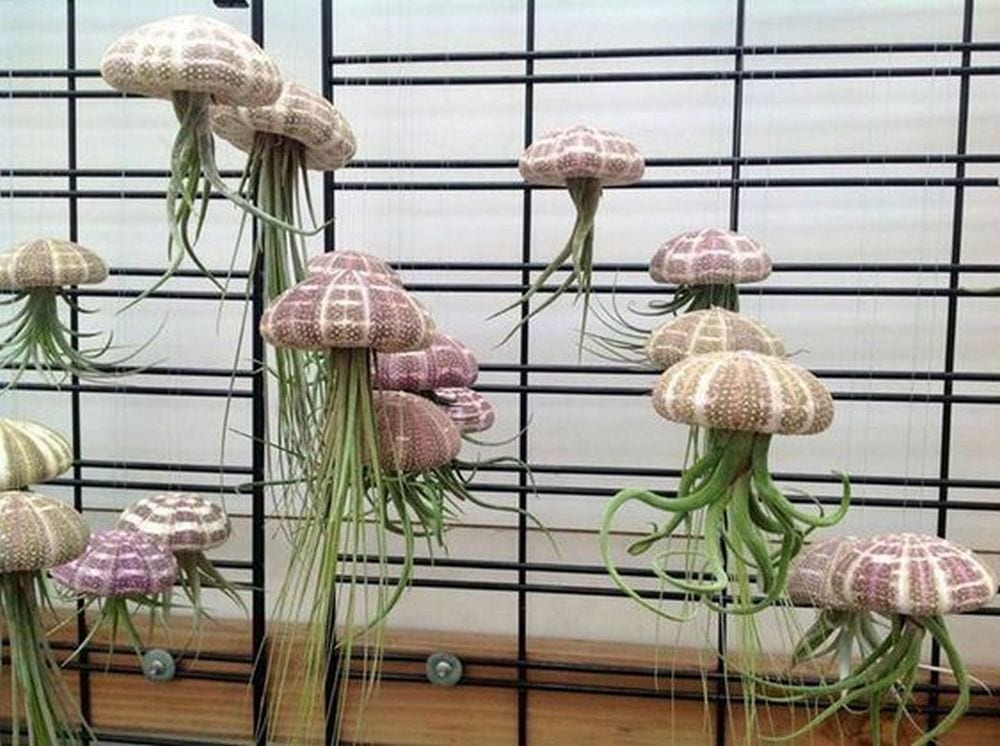
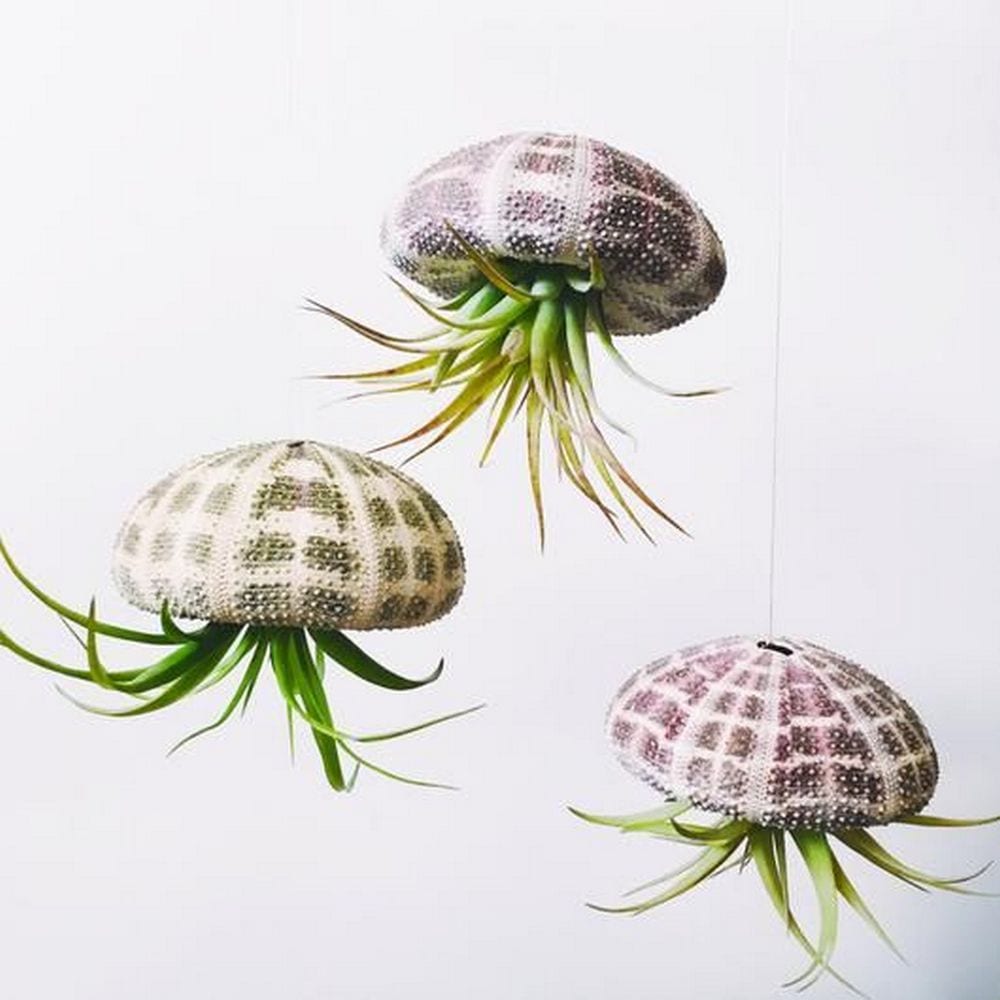
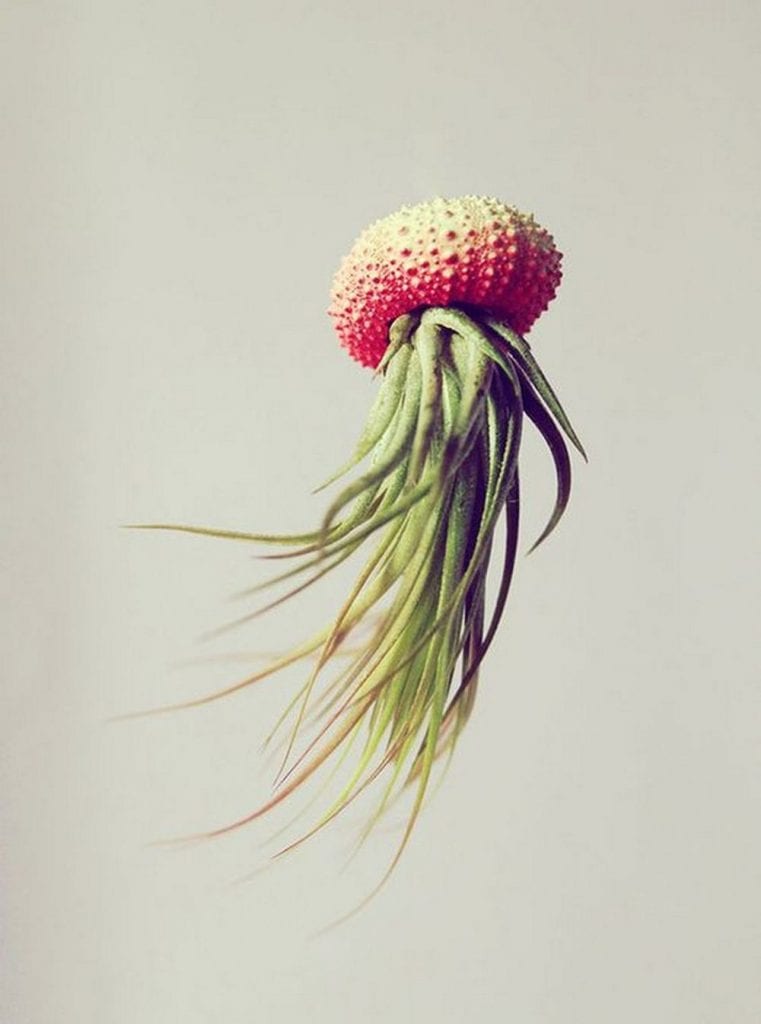
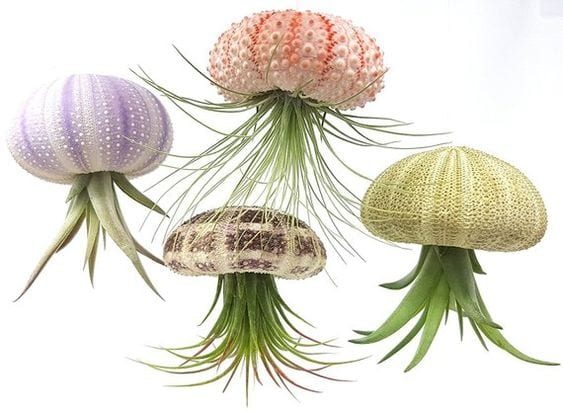
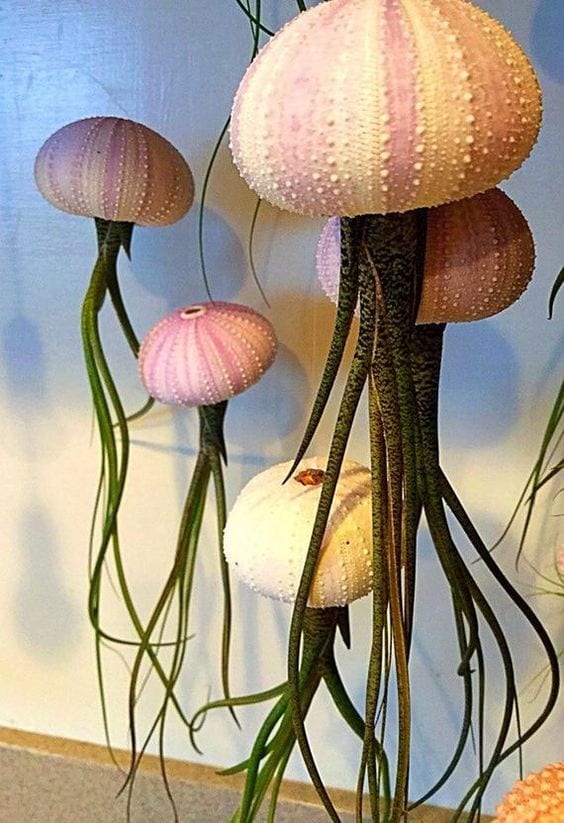
Care and Maintenance Tips
Maintaining a jellyfish air plant involves more than just admiring its unique beauty; it requires a bit of care to ensure it remains a vibrant and healthy addition to your space. Despite their hardy nature, air plants do need some attention to thrive.
Here, we provide essential care and maintenance tips to keep your jellyfish air plant looking its best.
Proper Lighting
Light plays a pivotal role in the health and growth of your jellyfish air plant. These distinctive plants thrive under bright, indirect sunlight, which simulates their natural habitat. To achieve this, position your jellyfish air plant near a window where it can bask in ample light without being exposed to the potentially damaging effects of direct sunlight, particularly during the intense midday hours.
This placement ensures that your air plant receives the light it needs without the risk of sunburn. In situations where natural sunlight is scarce, consider using artificial grow lights. These lights can provide a suitable alternative, offering the spectrum of light needed for your air plant to photosynthesize effectively and maintain its vibrant appearance.
Adequate Watering
Despite their name, air plants require more than just air to thrive—they need water, too. The misconception that air plants can live on air alone often leads to under-watering. In the controlled environment of a home, air plants need your help to stay hydrated.
A weekly soaking is a general rule of thumb to follow. Immerse your jellyfish air plant, including the sea urchin shell, in a bowl of water for approximately 20-30 minutes. This method ensures that the plant absorbs enough moisture to last until the next watering. After soaking, it’s crucial to shake off any excess water and place the air plant upside down.
This practice prevents water from accumulating in the crevices of the leaves, which could otherwise cause rot and damage to the plant. Allowing your jellyfish air plant to dry thoroughly before placing it back in its display spot is essential for its health and well-being.
Air Circulation
Optimal air circulation is essential for the well-being of your jellyfish air plant, particularly after the watering process. It’s important to allow your plant to dry completely before returning it to its display location.
Housing your jellyfish air plant in an enclosed container or a space lacking adequate airflow can lead to the development of mold, which is detrimental to the plant’s health. Placing your jellyfish air plant in a well-ventilated area not only prevents mold growth but also simulates the natural conditions in which air plants thrive, promoting robust growth and health.
Fertilizing for Growth
While fertilization is not mandatory for the survival of your jellyfish air plant, it can significantly enhance its growth, vitality, and blooming capability. Employing a specialized air plant fertilizer or a diluted solution of liquid houseplant fertilizer (at one-fourth the recommended strength) can provide your jellyfish air plant with the extra nutrients it requires. Integrating fertilization into your monthly watering routine can stimulate the production of blooms and pups, ensuring the continual growth and rejuvenation of your jellyfish air plant.
Temperature and Humidity
Jellyfish air plants are adaptable and can thrive in a wide temperature range, from 50-90°F (10-32°C). They naturally prefer high humidity environments but can adjust to areas with lower humidity levels, provided they receive sufficient water. It’s crucial to keep your jellyfish air plant away from air conditioning and heating vents.
These sources of artificial air can drastically alter the surrounding temperature and humidity levels, creating conditions that are unfavorable for the plant. Maintaining a stable environment that mimics the jellyfish air plant’s natural habitat is key to its health and longevity.
By following these care and maintenance tips, your jellyfish air plant will continue to grow and bring a touch of whimsical charm to your space. Remember, a little attention goes a long way in ensuring the health and longevity of your unique plant.
Environmental Benefits of Air Plants
Air plants, or Tillandsias, have captured the attention of plant enthusiasts not only for their unique aesthetic and minimal care requirements but also for their positive environmental impact. These fascinating plants offer a range of ecological benefits that contribute to their appeal.
By integrating air plants into our homes and gardens, we support a greener, more sustainable environment. Let’s explore the environmental benefits of air plants.
Air Purification
Air plants, known scientifically as Tillandsias, offer a remarkable advantage when it comes to improving the air quality within our homes and offices. Their ability to purify the air extends beyond the simple exchange of carbon dioxide for oxygen, a process common to all photosynthetic plants. What sets air plants apart is their capacity to actively remove pollutants from their environment. Through a process involving specialized cells in their leaves, air plants can capture and neutralize a variety of airborne chemicals.
These include common volatile organic compounds (VOCs) found indoors, such as formaldehyde, benzene, and trichloroethylene, which can emanate from furniture, paints, and cleaning products. By integrating air plants into indoor spaces, we harness a natural filtration system that can significantly enhance the quality of the air we breathe.
This not only contributes to a healthier living and working environment but also aligns with a broader commitment to wellness and environmental sustainability. The inclusion of air plants as a component of green design and eco-friendly living spaces underscores their value beyond aesthetic appeal, marking them as essential allies in our pursuit of healthier indoor environments.
Low Water Usage
In the context of global environmental challenges, the significance of water conservation cannot be overstated. Air plants emerge as champions of sustainability due to their remarkably low water requirements. Unlike their soil-reliant counterparts, air plants derive moisture directly from the air around them, a trait that allows them to thrive even in areas where water is scarce. This ability is particularly advantageous in humid climates, where the ambient air provides sufficient moisture for their growth.
However, even in less humid conditions, air plants maintain their minimal water needs, requiring only occasional misting or soaking to remain hydrated. This efficiency in water usage positions air plants as an eco-friendly alternative for greenery enthusiasts who are mindful of their water consumption. By choosing air plants, individuals can contribute to water conservation efforts while enjoying the greenery’s benefits. The minimal water requirement of air plants not only underscores their adaptability and resilience but also reflects a broader trend towards sustainable and responsible plant care.
As we continue to seek ways to reduce our environmental footprint, the selection of air plants for home and office spaces becomes a testament to our commitment to preserving natural resources for future generations.
Soil Conservation
The unique growth requirements of air plants, or Tillandsias, present a compelling advantage for soil conservation. Their ability to thrive without soil is not just a quirky trait but a significant ecological benefit. Traditional gardening and agriculture can lead to soil depletion and erosion, where the constant use of soil for plant growth degrades its quality and leads to the loss of fertile topsoil.
Jellyfish air plants circumvent this issue entirely by growing epiphytically – clinging to trees, rocks, and other structures without drawing nutrients from the soil. This characteristic is particularly beneficial in preventing soil erosion, a common environmental challenge that can lead to decreased agricultural productivity and increased sedimentation in waterways.
Moreover, air plants reduce the demand for peat moss, a popular component of potting mixes. Peat moss is harvested from peat bogs, ecosystems that are not only rare but also serve as significant carbon sinks. The extraction of peat contributes to the depletion of these vital ecosystems. By choosing air plants, gardeners and plant enthusiasts can contribute to the conservation of topsoil and peat bogs, supporting the health of our planet’s diverse ecosystems.
Supporting Biodiversity
Tillandsias, with their remarkable adaptability, play a crucial role in supporting biodiversity. These plants are capable of growing in a diverse array of environments, from lush rainforests to arid deserts, demonstrating their ability to coexist within various ecosystems. Their presence on trees, rocks, and even man-made structures like power lines, illustrates their versatility and resilience.
This adaptability is crucial for providing habitats and food sources for a wide range of organisms, including insects, birds, and small mammals. The existence of air plants in these environments contributes to a complex web of biodiversity, ensuring the survival and prosperity of various species.
By cultivating air plants, individuals can contribute to the preservation and promotion of biodiversity. Air plants can serve as a microhabitat for small organisms, even in urban settings, bridging the gap between natural and human-made environments. Encouraging the growth and propagation of air plants thus becomes a way to support and enhance biodiversity, fostering a richer, more varied ecosystem.
Carbon Sequestration
While they may not reach the towering heights of trees, air plants contribute to carbon sequestration in their own right. Through the process of photosynthesis, air plants absorb carbon dioxide from the atmosphere, converting it into oxygen and biomass. This ability to sequester carbon, albeit on a smaller scale, plays a part in mitigating the effects of climate change by reducing the amount of greenhouse gases in the atmosphere.
Incorporating air plants into urban and suburban landscapes offers a practical means of enhancing green spaces and improving air quality. Urban environments, often characterized by limited greenery and higher levels of pollution, can greatly benefit from the introduction of air plants.
These plants can absorb carbon dioxide and pollutants, contributing to cleaner and healthier air. Moreover, their versatility and low maintenance make them ideal for urban dwellers seeking to add more green to their living spaces without the extensive requirements of traditional gardening.
Air plants offer a multitude of environmental benefits that extend beyond their beauty and ease of care. By purifying the air, conserving water and soil, supporting biodiversity, and aiding in carbon sequestration, air plants represent a sustainable and eco-friendly addition to any indoor or outdoor space. Embracing these unique plants can help us make a small yet meaningful impact on the environment.
Conclusion
Creating a jellyfish air plant is not only a simple and enjoyable DIY project but also a unique way to add a touch of whimsy to any space. These captivating displays offer environmental benefits, such as air purification and water conservation, making them an eco-friendly choice for indoor gardening. Additionally, jellyfish air plants contribute to biodiversity and carbon sequestration, enhancing the ecological value of our homes and offices.
Improve the look of your interior space with more green decorations. Check out our guide on poinsettia flowers next!


